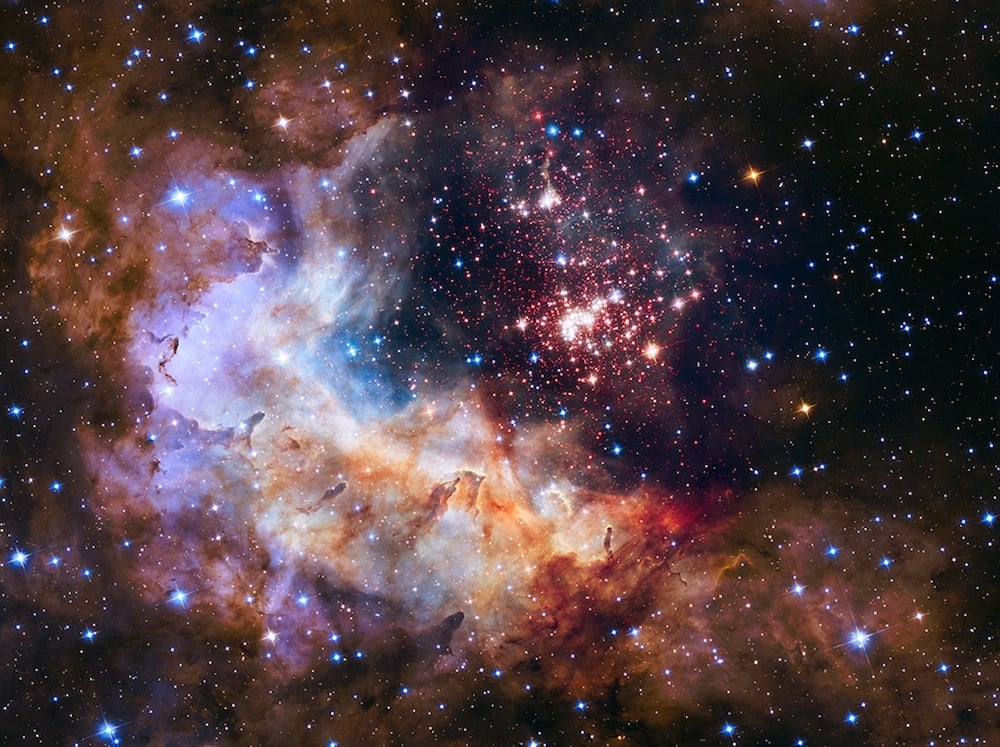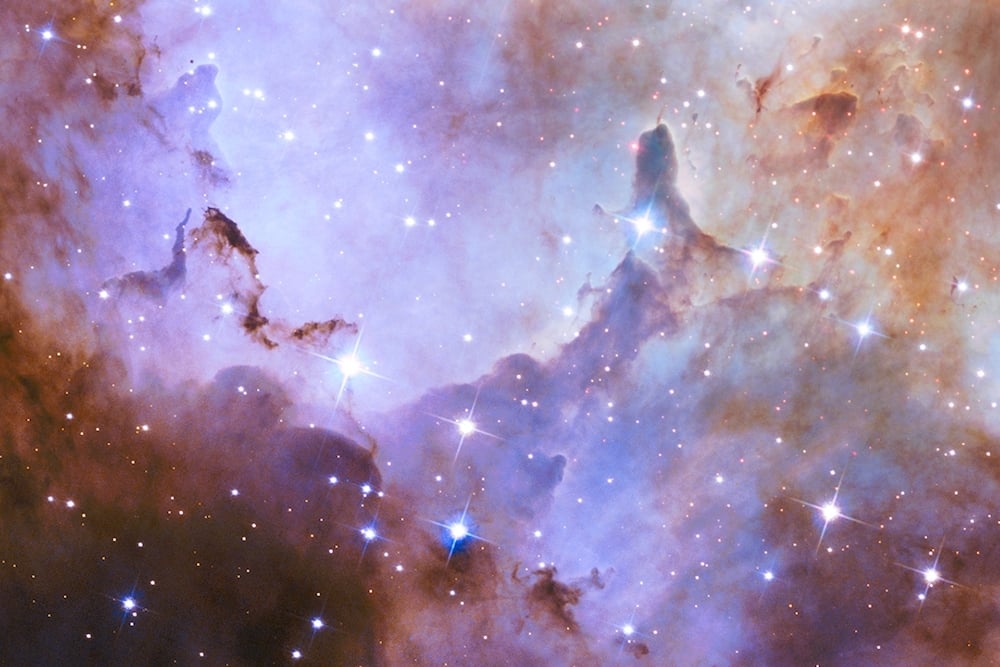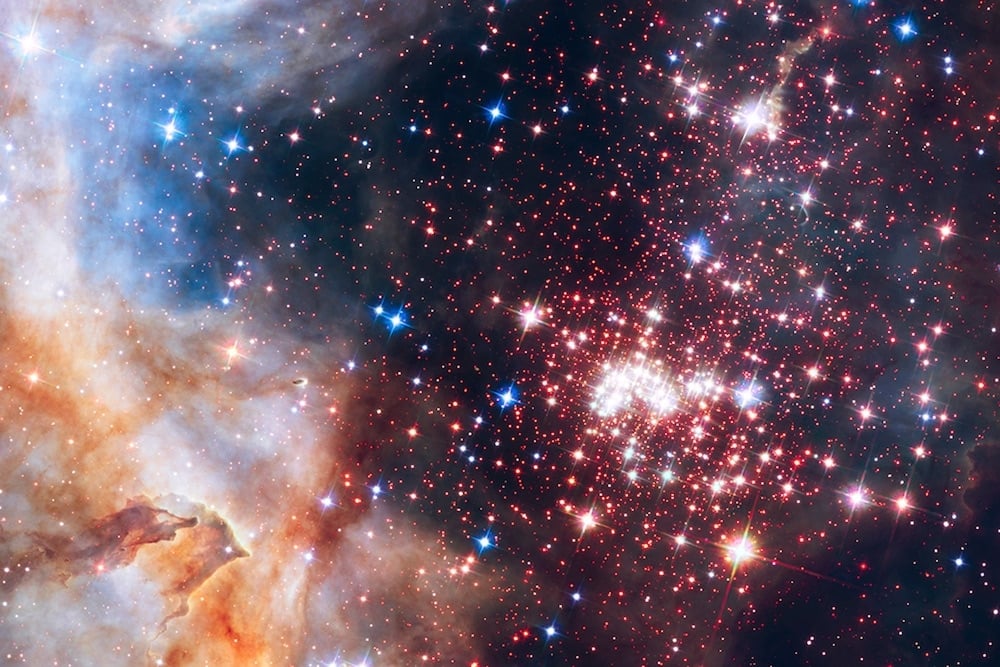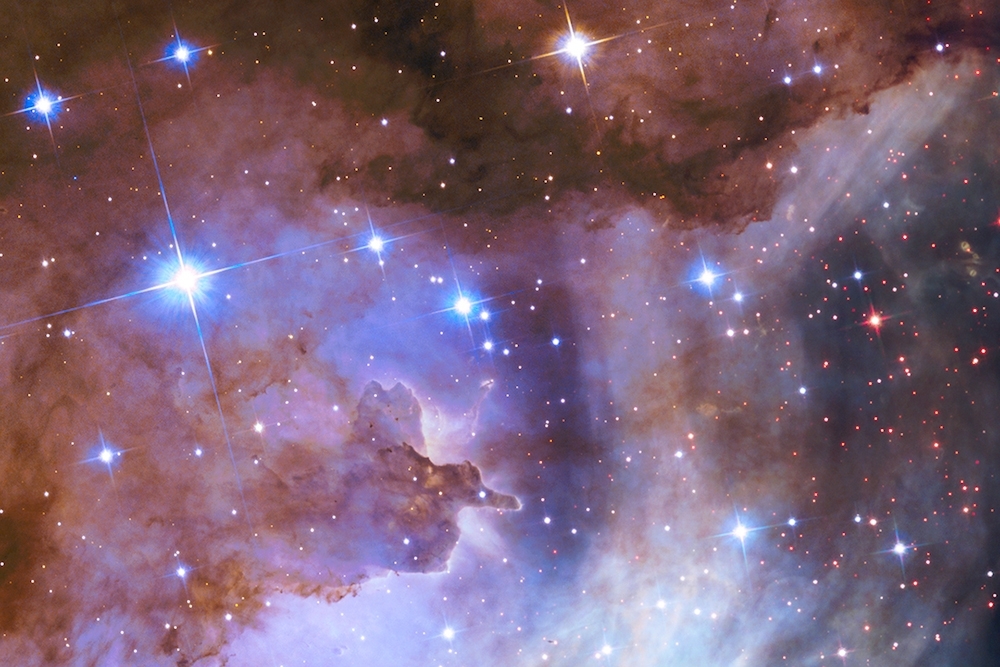Art World
Behold Fantastic Space Photographs on the Hubble Telescope’s 25th Anniversary
These are the hottest, brightest stars in the galaxy.

These are the hottest, brightest stars in the galaxy.

Sarah Cascone

Today marks the 25th anniversary of the launch of Hubble Space Telescope, and NASA is marking the occasion with new, spectacular photographs and video of the Westerlund 2 Star Cluster, a birthplace for young stars some 20,000 light years away in the Carina constellation.
“Hubble has completely transformed our view of the universe,” John Grunsfeld, astronaut and associate administrator of NASA’s Science Mission Directorate, said in a press release. “This vista of starry fireworks and glowing gas is a fitting image for our celebration of 25 years of amazing Hubble science.”

The Westerlund 2 Star Cluster (detail).
Photo: NASA, ESA, the Hubble Heritage Team (STScI/AURA), A. Nota (ESA/STScI), and the Westerlund 2 Science Team.
At two million years old, the Westerlund cluster, discovered in the 1960s by Swedish astronomer Bengt Westerlund, is considered comparatively young. The grouping is home to some of the hottest, brightest, and most massive stars in the galaxy.
The image’s firework-like appearance comes from large stars giving off large quantities of ultraviolet light, and what NASA describes as “hurricane-force winds that etch away the enveloping hydrogen gas cloud. This creates a fantasy celestial landscape of pillars, ridges, and valleys.”

The Westerlund 2 Star Cluster (detail).
Photo: NASA, ESA, the Hubble Heritage Team (STScI/AURA), A. Nota (ESA/STScI), and the Westerlund 2 Science Team.
Since 1990, Hubble has made no less than 1.2 million observations of over 38,000 celestial objects. This year alone, NASA shared a new version of its haunting Pillars of Creation image (see NASA’s Stunning Pillars of Creation Takes Space Photography to New Heights), and its largest Hubble image ever, featuring the Andromeda Galaxy (see See 100 Million Andromeda Galaxy Stars in the Largest Hubble Photograph Ever).
Even though that 1.5 billion pixel–wide photo is an outlier in terms of size, Hubble still manages to produce an average of 829 gigabytes of data every month, and more than 100 terabytes over its lifetime—all of which is available to the public for free.

The Westerlund 2 Star Cluster (detail).
Photo: NASA, ESA, the Hubble Heritage Team (STScI/AURA), A. Nota (ESA/STScI), and the Westerlund 2 Science Team.
The Hubble is able to capture such stunningly crystal clear images because the camera does not have to contend with the earth’s atmosphere, which distorts our view of the heavens.
“You’ll only hear an astronomer say this, but the air that we breathe—it sucks,” astronomer Jason Kalirai, who manages Hubble projects at the Space Telescope Science Institute, told NPR. “It makes our images blurry.”

The Westerlund 2 Star Cluster (detail).
Photo: NASA, ESA, the Hubble Heritage Team (STScI/AURA), A. Nota (ESA/STScI), and the Westerlund 2 Science Team.
Earlier this year, another NASA spacecraft, the Solar Dynamics Observatory, celebrated five years in operation, and 100 million photos of the sun captured (see NASA Spacecraft Takes 100 Millionth Photo of the Sun).
Watch Flight to Star Cluster Westerlund 2: